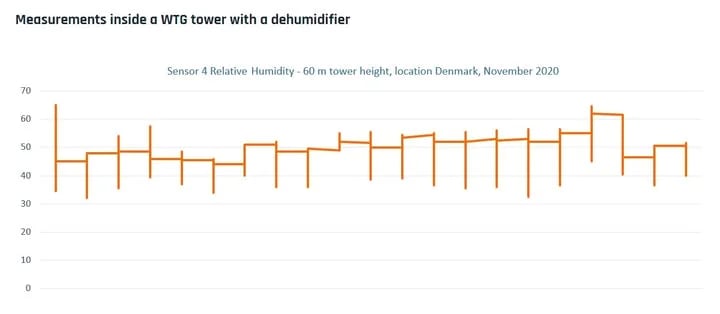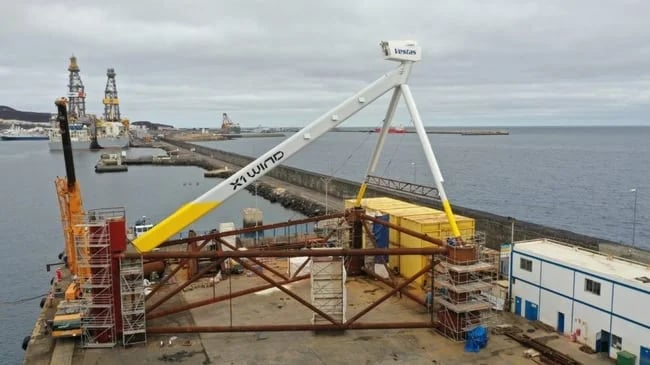Cotes is increasingly being contacted by large wind turbine asset owners [they understandably insisted on being anonymous] who have problems with their onshore turbines in locations like North America, Brazil, Southeast Asia, Australia, England, Scotland, and Denmark. Coincidence? I think NOT! Every single one of these locations has one thing in common, and that is excessive levels of humidity.
So obvious and prolific is the issue, that we decided to create the Cotes Humidity Index Map to help wind turbine asset owners and developers better understand the conditions their wind turbines are being exposed to and the benefits of having the right dry-air strategy.
What is the Cotes Humidity Index Map?
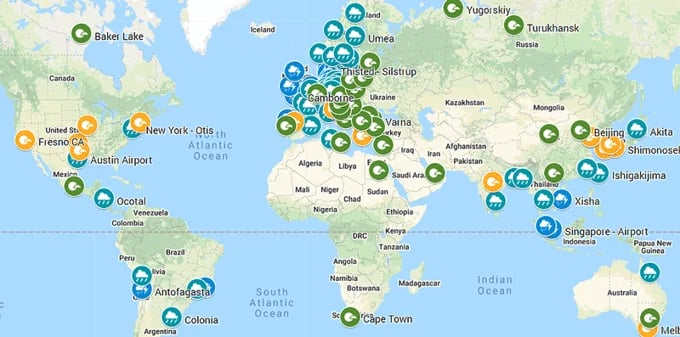 This map plots official global weather data (average hourly values over a 10-year period for temperature and relative humidity) to show how much aggressive corrosion you should expect on your structures during the first year - reference ISO 9223. The Cotes Humidity Index is optimized for onshore and nearshore wind farms, as weather data is collected from onshore met stations. No local salt measurements are available, so we are using a global standard. However, in real life you should expect variance in salt levels, especially in coastal areas where sea‐spray aerosol particles contain even more salt than in some offshore locations.
This map plots official global weather data (average hourly values over a 10-year period for temperature and relative humidity) to show how much aggressive corrosion you should expect on your structures during the first year - reference ISO 9223. The Cotes Humidity Index is optimized for onshore and nearshore wind farms, as weather data is collected from onshore met stations. No local salt measurements are available, so we are using a global standard. However, in real life you should expect variance in salt levels, especially in coastal areas where sea‐spray aerosol particles contain even more salt than in some offshore locations.
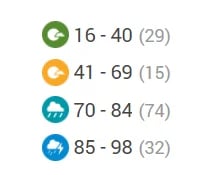
How to use the Cotes Humidity Index
How to use the humidity index: The dataset contains average temperature and humidity data - per hour - for all days in a year averaged in the period from 2000 to 2009. The Map shows how many hours throughout the year on average are above 60% RH. A green icon indicates that between 16% and 40% of annual hours relative humidity is above 60%. Dark blue 85% to 98% of the time.
What is the humidity index in your area? If you have any questions or request to see your location on the map, please contact Henrik at htk@cotes.com
What causes corrosion in wind turbines?
In short, corrosion is caused by high or unwanted levels of humidity inside the wind turbine.
What causes excessive levels of humidity? To answer this and illustrate the point, we collected data from inside a turbine at a nearshore site in Denmark with humidity levels peaking well above 75%RH (see image below) with much greater frequency due to changes in temperature. These high levels of humidity constitute offshore conditions at best.
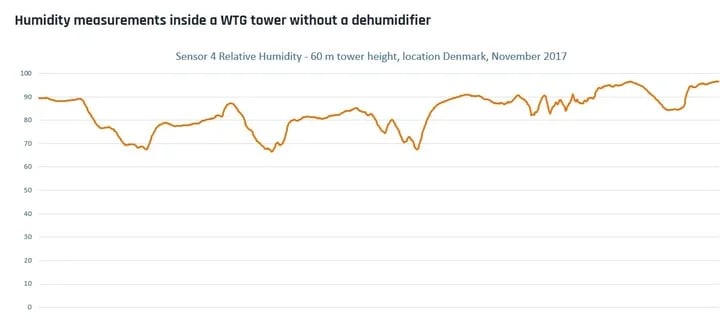
Below is a data sample in similar conditions after a Cotes dehumidifier was installed where we saw humidity levels average around 50% RH. The “peaks” you see in the graph are caused by the tower door being opened.
What is the right way to dry a wind turbine?
For over 20 years, Cotes has worked closely with wind turbine manufacturers on their wind turbine protection and maintenance strategy. Today, our dry-air solutions (adsorption dehumidifiers) are in over 80 percent of all offshore turbines as we work with major OEMs - Vestas, Siemens Gamesa, GE and Shanghai Electric to name a few. We are also involved in new offshore projects like X1WIND.
PivotBuoy®, developed by a consortium lead by X1Wind and helped by contributions from industrial partners including Cotes, is near completion after 2 years of hard work, testing, and development. Read more.
Furthermore, Cotes already supplies small adsorption dehumidifiers (also called desiccant dehumidifiers) to all major OEMs for nacelle and tower transportation to protect assets as they embark on long journeys for months at end, sometimes years, before being installed and becoming operational.
Once in operation, creating a more stable climate inside the turbines with an integrated dehumidification system is crucial in creating a better working environment for engineers and service technicians, increasing wind turbine output, enabling a faster start-up process, ensuring significant savings with reduced wind turbine downtime due to lower corrosion classes and fewer faults in the electrical systems.
Making the right decision for your turbines and your business
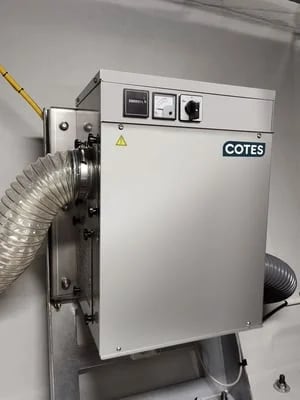
When considering the right dry-air strategy for your wind turbine you need to consider if the corrosion class of your turbine is suited for the humidity index of the surrounding climate on site. So, when turbines are being installed in hot and humid locations – APAC region as an example – we see an increasing demand for a stable dry-air solution. This is all a roundabout way of saying, “High humidity bad, dry air good”.
But don’t take our word for it!
Fraunhofer released a report In light of the frequent and costly failures of power converters in wind turbines. A large consortium of research institutes and companies joined forces to investigate the underlying causes and key driving factors of the failures. [Spoiler alert! Humidity issues are key driving factors]
